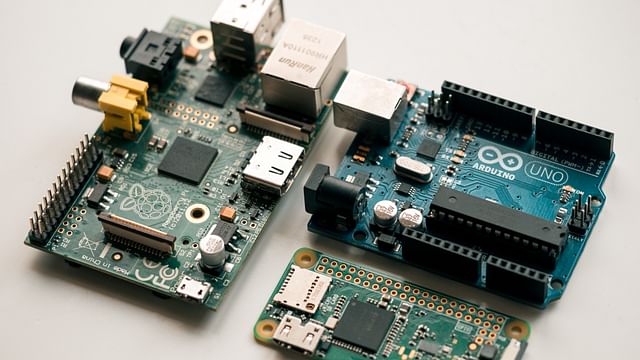
Control Your Home with Raspberry Pi: An Ultimate Guide
Home automation is rapidly growing in popularity, as more and more households are discovering the convenience and security that automated devices can offer. From smart lights and locks to security cameras and thermostats, home automation devices are becoming increasingly sophisticated and accessible. And at the heart of many of these systems is a small but powerful computer called Raspberry Pi.
If you're looking to control your home with Raspberry Pi, you've come to the right place. In this ultimate guide, we'll take you through everything you need to know about using Raspberry Pi to automate your home and make your life easier. From setting up your Raspberry Pi to adding compatible devices to your home network and creating custom automation scripts, we've got you covered.
What is Raspberry Pi?
Raspberry Pi is a small but powerful computer that is designed to make computing more accessible and affordable for everyone. Originally developed in the UK to teach schoolchildren about computing and programming, Raspberry Pi has since become a popular tool for hobbyists, makers, and enthusiasts all over the world.
Raspberry Pi comes in a variety of models, from the entry-level Raspberry Pi Zero to the more powerful Raspberry Pi 4. All models include a CPU, RAM, and input/output (I/O) options such as USB, HDMI, and Ethernet. With the right tools and know-how, Raspberry Pi can be used for a wide range of tasks, from running desktop applications to controlling robots.
Setting up Raspberry Pi for Home Automation
Before you can start using Raspberry Pi to control your home, you'll need to set it up. Here's what you'll need to do:
Install an operating system: Raspberry Pi can run a variety of operating systems, including Raspberry Pi OS (formerly called Raspbian), Ubuntu, and others. You'll need to choose an operating system and install it onto a microSD card, which you'll then insert into your Raspberry Pi.
Connect to your home network: Once you've booted up Raspberry Pi, you'll need to connect it to your home network. You can do this using Ethernet or Wi-Fi, depending on the model of Raspberry Pi you're using.
Install necessary software: In order to control your home with Raspberry Pi, you'll need to install some software. You can use open-source software like Home Assistant or Node-RED to get started.
Adding Compatible Devices to Your Home Network
Once you've set up Raspberry Pi, you'll need to add compatible devices to your home network in order to control them. Here are some of the most popular types of home automation devices that can be controlled with Raspberry Pi:
Smart lights: Philips Hue, LIFX, and other smart light brands can be connected to Raspberry Pi using software like Home Assistant.
Smart locks: You can use Raspberry Pi to control smart locks like August and Yale, allowing you to lock and unlock your doors remotely.
Security cameras: With Raspberry Pi and a compatible camera, you can create a DIY security camera system that can be monitored and controlled remotely.
Thermostats: Raspberry Pi can be used to control smart thermostats like Nest, allowing you to adjust your home's temperature from anywhere.
Creating Custom Automation Scripts
One of the most powerful things about using Raspberry Pi to control your home is the ability to create custom automation scripts. With the right knowledge and tools, you can write scripts that automate almost any task in your home.
For example, you could write a script that automatically turns off all the lights in your home when you go to bed, or that turns on your coffee maker when you wake up in the morning. The possibilities are endless, and once you've mastered the basics of scripting on Raspberry Pi, you can create truly impressive automation systems that make your life easier and more convenient.
Conclusion
Raspberry Pi is a powerful tool for home automation, and with the right setup and knowledge, you can use it to create a fully automated and convenient home environment. Whether you're new to Raspberry Pi or an experienced user, this guide should help you get started with controlling your home with Raspberry Pi. So what are you waiting for? Start exploring the world of home automation today!
Posted on: Jan 16, 2023 Last updated at: May 4, 2023